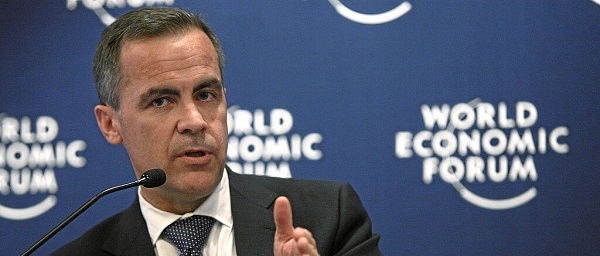Economy
Nighttime light intensity exposes failure of autocratic regimes

From the Fraser Institute
When people have more economic freedom, they are allowed to make more of their own economic decisions, free of constraints imposed by others. During the 1960s and 1970s, despite the relative economic success of most western democracies, most of the rest of the world rejected strong pro-market policies, with the notable exception of Hong Kong. Milton Friedman said Hong Kong offered “an almost laboratory experiment in what happens when government is limited to its proper functions and leaves people free to pursue their own objectives.” Hong Kong’s success served as the primary example of the uplifting potential of economic freedom.
However, without a quantifiable measure of economic freedom, it was difficult to generalize these claims. This led to the conception and production of the Economic Freedom of the World (EFW) index by the Fraser Institute. Armed with a measure of economic freedom, researchers could test the claim that economic freedom leads to prosperity.
Since its inception, the multiple editions of the dataset routinely confirmed that economically freer countries have higher income levels, enjoy faster economic growth, are more resilient to shocks, and produce great reductions in poverty and income gains all along the income ladder.
But in fact, in a recent article published by the European Journal of Political Economy and co-authored with Macy Scheck and Sean Patrick Alvarez, I offer evidence that the EFW report often underestimates the potency of economic freedom.
Why? Because the economic statistics produced in countries ruled by autocrats are not believable.
In autocratic regimes, rulers must bolster their legitimacy to prevent coups or uprisings, so they produce statistics that exaggerate their country’s performance. And since neither the opposition nor independent authorities are allowed to challenge these claims, autocrats can get away with lying about the size of their economies.
Autocrats also repress economic freedom (along with other freedoms), so any estimation of the effects of economic freedom on economic development will likely be exaggerated due to the lies of dictators.
How can we correct these lies? It’s not as if the autocrats would let us check their books. But fortunately, we don’t have to. We simply need a measure of economic activity that correlates with economic development and cannot be manipulated. Namely, nighttime light intensity, as measured by satellites orbiting the Earth.
Satellites provide accurate and unbiased information, which dictators cannot manipulate. Nighttime light is artificial (manmade) and its level should depict (all else being equal) levels of development. It’s why one can often see images of North and South Korea at night where the former is in utter darkness and the latter sparkles like a Christmas tree.
By examining the relationship between light intensity and economic development as measured by GDP in democracies—where data is generally reliable—one can estimate the extent of inaccuracies in the economic data reported by dictatorships and then create corrected data.
In our article, based on satellite data, we found that in more than 110 countries (including dictatorships), the association between economic freedom and income levels was between 10 per cent and 62 per cent greater than previously estimated. We also found that when using the corrected data, one extra point of economic freedom (on a 10-point scale) generated between 5 per cent and 24 per cent more economic growth from 1992 to 2012.
These results are a powerful answer to those who doubt the value of economic freedom. And they offer a way to see past the lies of dictators.
Economy
Trump opens door to Iranian oil exports

This article supplied by Troy Media.
U.S. President Donald Trump’s chaotic foreign policy is unravelling years of pressure on Iran and fuelling a surge of Iranian oil into global markets. His recent pivot to allow China to buy Iranian crude, despite previously trying to crush those exports, marks a sharp shift from strategic pressure to transactional diplomacy.
This unpredictability isn’t just confusing allies—it’s transforming global oil flows. One day, Trump vetoes an Israeli plan to assassinate Iran’s supreme leader, Ayatollah Khamenei. Days later, he calls for Iran’s unconditional surrender. After announcing a ceasefire between Iran, Israel and the United States, Trump praises both sides then lashes out at them the next day.
The biggest shock came when Trump posted on Truth Social that “China can now continue to purchase Oil from Iran. Hopefully, they will be purchasing plenty from the U.S., also.” The statement reversed the “maximum pressure” campaign he reinstated in February, which aimed to drive Iran’s oil exports to zero. The campaign reimposes sanctions on Tehran, threatening penalties on any country or company buying Iranian crude,
with the goal of crippling Iran’s economy and nuclear ambitions.
This wasn’t foreign policy—it was deal-making. Trump is brokering calm in the Middle East not for strategy, but to boost American oil sales to China. And in the process, he’s giving Iran room to move.
The effects of this shift in U.S. policy are already visible in trade data. Chinese imports of Iranian crude hit record levels in June. Ship-tracking firm Vortexa reported more than 1.8 million barrels per day imported between June 1 and 20. Kpler data, covering June 1 to 27, showed a 1.46 million bpd average, nearly 500,000 more than in May.
Much of the supply came from discounted May loadings destined for China’s independent refineries—the so-called “teapots”—stocking up ahead of peak summer demand. After hostilities broke out between Iran and Israel on June 12, Iran ramped up exports even further, increasing daily crude shipments by 44 per cent within a week.
Iran is under heavy U.S. sanctions, and its oil is typically sold at a discount, especially to China, the world’s largest oil importer. These discounted barrels undercut other exporters, including U.S. allies and global producers like Canada, reducing global prices and shifting power dynamics in the energy market.
All of this happened with full knowledge of the U.S. administration. Analysts now expect Iranian crude to continue flowing freely, as long as Trump sees strategic or economic value in it—though that position could reverse without warning.
Complicating matters is progress toward a U.S.-China trade deal. Commerce Secretary Howard Lutnick told reporters that an agreement reached in May has now been finalized. China later confirmed the understanding. Trump’s oil concession may be part of that broader détente, but it comes at the cost of any consistent pressure on Iran.
Meanwhile, despite Trump’s claims of obliterating Iran’s nuclear program, early reports suggest U.S. strikes merely delayed Tehran’s capabilities by a few months. The public posture of strength contrasts with a quieter reality: Iranian oil is once again flooding global markets.
With OPEC+ also boosting output monthly, there is no shortage of crude on the horizon. In fact, oversupply may once again define the market—and Trump’s erratic diplomacy is helping drive it.
For Canadian producers, especially in Alberta, the return of cheap Iranian oil can mean downward pressure on global prices and stiffer competition in key markets. And with global energy supply increasingly shaped by impulsive political decisions, Canada’s energy sector remains vulnerable to forces far beyond its borders.
This is the new reality: unpredictability at the top is shaping the oil market more than any cartel or conflict. And for now, Iran is winning.
Toronto-based Rashid Husain Syed is a highly regarded analyst specializing in energy and politics, particularly in the Middle East. In addition to his contributions to local and international newspapers, Rashid frequently lends his expertise as a speaker at global conferences. Organizations such as the Department of Energy in Washington and the International Energy Agency in Paris have sought his insights on global energy matters.
Troy Media empowers Canadian community news outlets by providing independent, insightful analysis and commentary. Our mission is to support local media in helping Canadians stay informed and engaged by delivering reliable content that strengthens community connections and deepens understanding across the country.
Alberta
Pierre Poilievre – Per Capita, Hardisty, Alberta Is the Most Important Little Town In Canada

From Pierre Poilievre
-

 International2 days ago
International2 days agoCBS settles with Trump over doctored 60 Minutes Harris interview
-

 Crime1 day ago
Crime1 day agoBryan Kohberger avoids death penalty in brutal killing of four Idaho students
-

 Business2 days ago
Business2 days agoWhy it’s time to repeal the oil tanker ban on B.C.’s north coast
-

 Alberta2 days ago
Alberta2 days agoPierre Poilievre – Per Capita, Hardisty, Alberta Is the Most Important Little Town In Canada
-

 MxM News2 days ago
MxM News2 days agoUPenn strips Lia Thomas of women’s swimming titles after Title IX investigation
-

 Business2 days ago
Business2 days agoLatest shakedown attempt by Canada Post underscores need for privatization
-

 Energy2 days ago
Energy2 days agoIf Canada Wants to be the World’s Energy Partner, We Need to Act Like It
-

 COVID-191 day ago
COVID-191 day agoTop COVID doctor given one of Canada’s highest honors







